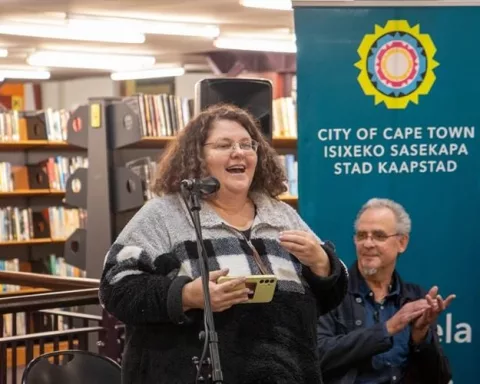Education within correctional institutions can help break the cycle of recidivism and create a pathway for a better future for inmates. Artistic programs, alongside academic endeavors, contribute to emotional and psychological healing, allowing inmates to express themselves and address their past constructively. However, limited resources, overcrowding, and resistance from both inmates and staff present obstacles to successful implementation of educational programs. Advocates and organizations continue to urge policy reforms to prioritize rehabilitation over punishment and invest in education and rehabilitation for promoting reintegration of inmates into society.
What is the influence of education in correctional institutions?
Providing education in correctional institutions can disrupt the cycle of recidivism and create a pathway for a better future. Education enhances self-confidence and reduces the chances of inmates reverting to criminal behavior after being released. Incorporating artistic programs within correctional institutions has also proven effective for therapy and rehabilitation. However, limited resources, overcrowding, and resistance from both inmates and staff present obstacles to successful implementation of educational programs. Continued investment in education and rehabilitation is crucial for promoting the reintegration of inmates into society as responsible and law-abiding citizens.
Enhancing Rehabilitation through Scholastic Accomplishments
As the 2023 National Senior Certificate (NSC) final examinations commence in correctional institutions nationwide, 198 inmates are gearing up to face various subjects, starting with Computer Applications Technology on October 24th. Initially, the number of inmates was 204, but six were excluded due to special remission of sentences. This demonstrates the Department of Correctional Services’ (DCS) dedication to promoting personal development, rehabilitation, and ultimately reducing crime rates through education.
Makgothi Thobakgale, National Commissioner of Correctional Services, strongly advocates for the transformative potential of education, as it helps disrupt the cycle of recidivism and creates a pathway for a better future. The previous year’s Grade 12 class displayed the possibility for success, achieving an outstanding 87.5% pass rate. Furthermore, eleven schools achieved a flawless 100% pass rate, and four inmates earned six distinctions, with the highest performer obtaining an average score of 87.9%.
DCS is optimistic about even greater accomplishments this year, due to heightened preparedness and determination among the inmates. Besides the 198 inmates participating in the NSC examinations, another group of 1,180 inmates will sit for Adult Education and Training (AET) Level 4 examinations, while 1,471 inmates will take part in Tertiary Education and Technical Vocational Education and Training (TVET) examinations.
The Life-Changing Effects of Education on Inmates
Providing education within correctional institutions plays a vital role in cultivating a sense of self-value and purpose for inmates. Commissioner Thobakgale contends that education can enhance self-confidence and reduce the chances of inmates reverting to criminal behavior after being released. He emphasizes the significance of strategic collaborations and the commitment of educators and correctional officials in securing a bright future for incarcerated individuals.
A powerful historical example supporting the impact of education on inmate rehabilitation is the story of Malcolm X. His incarceration led him to discover a vast array of knowledge through literature, ultimately transforming him into a renowned civil rights activist and influential figure in American history. This case demonstrates the potential for positive change when education is accessible in correctional institutions.
The Contribution of Art in Recovery and Rehabilitation
Incorporating artistic programs within correctional institutions has proven to be an effective method for therapy and rehabilitation, alongside academic endeavors. Art therapy, music therapy, and creative writing workshops all contribute to the emotional and psychological healing of inmates, allowing them to express themselves and address their past constructively.
The effectiveness of these programs is evidenced by the experiences of several inmates who became successful artists, musicians, and writers after their release. These individuals serve as beacons of hope, illustrating the transformative power of the arts in the rehabilitation process.
Obstacles and Prospects
While substantial progress has been made in inmate education and rehabilitation, challenges persist. Limited resources, overcrowding, and resistance from both inmates and staff all present hurdles to the successful implementation of educational programs. Despite these obstacles, continued investment in education and rehabilitation is crucial for promoting the reintegration of inmates into society as responsible and law-abiding citizens.
Organizations such as the Prison Education Project and the Bard Prison Initiative actively work to increase educational opportunities for inmates, while advocates continue to urge policy reforms to prioritize rehabilitation over punishment.
It is clear that the power of education, supported by strategic partnerships and committed professionals, has the potential to transform the lives of those within correctional institutions. As Commissioner Thobakgale expresses his best wishes to the Class of 2023 for their examinations, the DCS remains dedicated to ensuring a credible examination process across all centers and nurturing a brighter future for everyone involved.
1. What is the influence of education in correctional institutions?
Providing education in correctional institutions can disrupt the cycle of recidivism and create a pathway for a better future. Education enhances self-confidence and reduces the chances of inmates reverting to criminal behavior after being released.
2. What are some obstacles to successful implementation of educational programs in correctional institutions?
Limited resources, overcrowding, and resistance from both inmates and staff present obstacles to successful implementation of educational programs.
3. How can artistic programs help in the rehabilitation process of inmates?
Artistic programs, alongside academic endeavors, contribute to emotional and psychological healing, allowing inmates to express themselves and address their past constructively.
4. What are some examples of successful artist, musician, and writer inmates?
Several inmates who became successful artists, musicians, and writers after their release serve as beacons of hope, illustrating the transformative power of the arts in the rehabilitation process.
5. What is the National Senior Certificate (NSC) final examination?
The NSC is a South African educational qualification that is awarded to students upon successful completion of their high school education.
6. How many inmates are participating in the NSC examinations?
198 inmates are gearing up to face various subjects, starting with Computer Applications Technology on October 24th.
7. How does the Department of Correctional Services (DCS) promote personal development, rehabilitation, and ultimately reduce crime rates through education?
The DCS provides education within correctional institutions to disrupt the cycle of recidivism and create a pathway for a better future. The department is determined to secure a bright future for incarcerated individuals through strategic collaborations and the commitment of educators and correctional officials.
8. What organizations actively work to increase educational opportunities for inmates?
Organizations such as the Prison Education Project and the Bard Prison Initiative actively work to increase educational opportunities for inmates, while advocates continue to urge policy reforms to prioritize rehabilitation over punishment.








